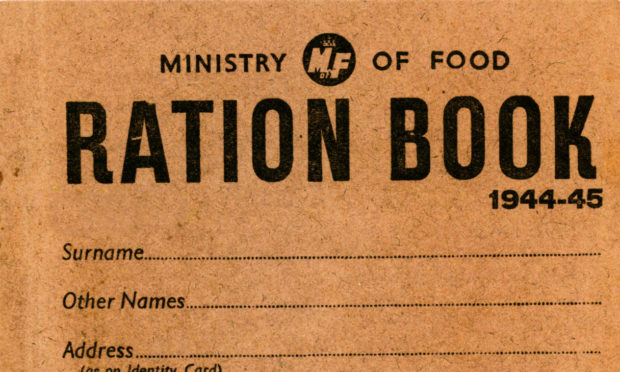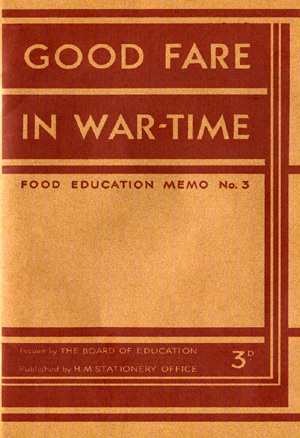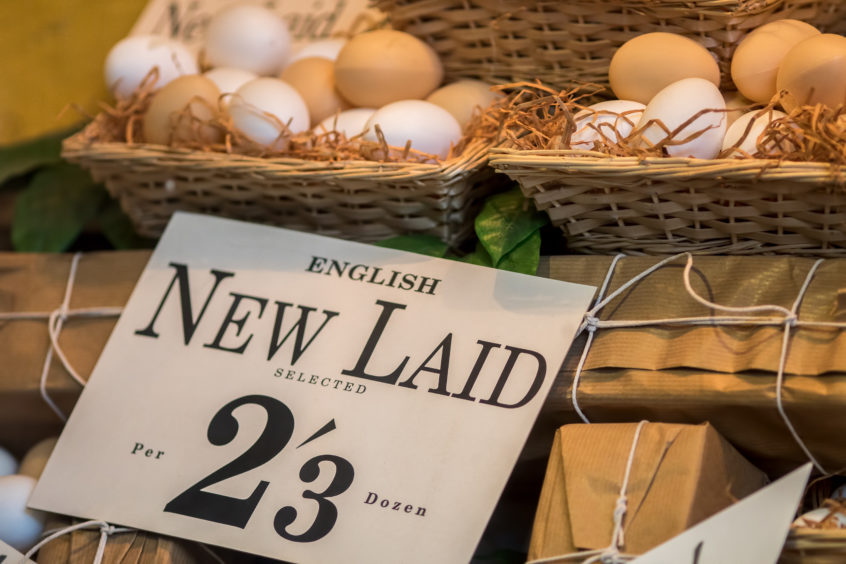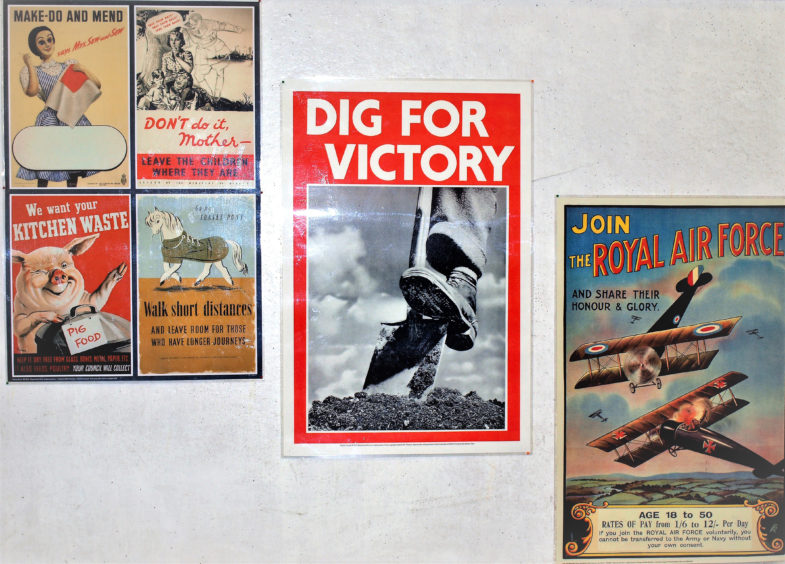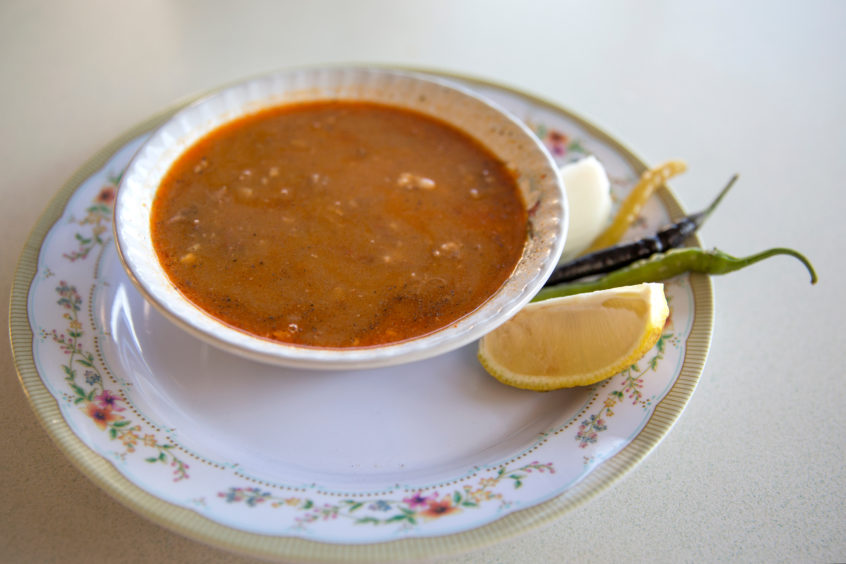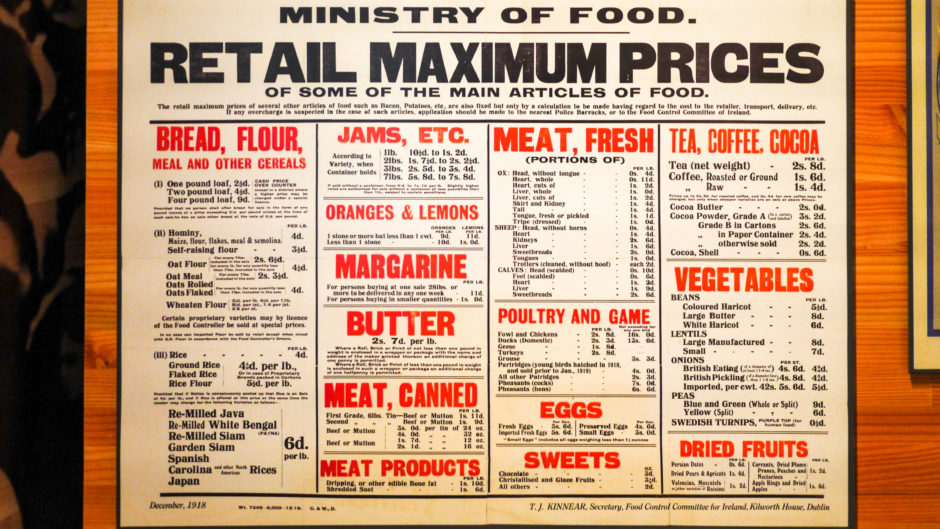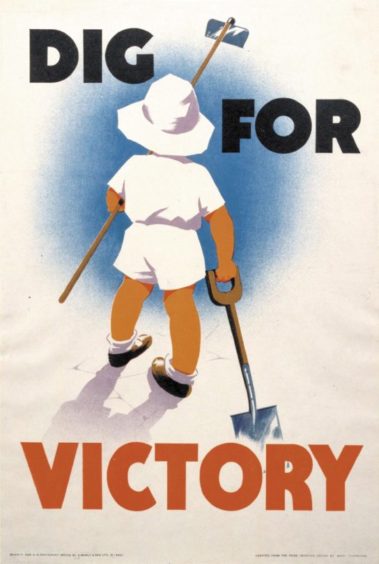During the Second World War food rationing was a necessity, but could we learn lessons from the meals people ate? Brian Stormont discovered a reduction in foodstuffs we take for granted today resulted in healthier diets, with deaths from strokes and heart disease plummeting.
As the country marks 75 years since the end of the Second World War, what is often forgotten is the impact that rationing had on people, not only during the conflict but in the years that followed.
Just because the war ended, it didn’t suddenly mean that normal service was resumed. In fact rationing in Great Britain continued until July 1954 – nine years after hostilities concluded.
To help hard-pressed families cope with reduced availability of certain food stuffs, the government produced a booklet with easy-to-follow nutritious recipes to cook using ingredients that were freely available.
The Good Fare recipe book, first published in 1941, had a number of editions and was frequently updated with new dishes added to the rationing recipe diet.
Costing threepence and issued by the Board of Education, the booklet, the precursor to Good Eating published three years later, had recipes for dishes including fish, meat, pulses, vegetables, oatmeal, pulses and puddings.
And there was a section for sausage rolls, puddings and turnovers and “odd recipes”.
The “odd” dishes are some of the most intriguing including carrot fillings for tarts and sandwiches. As carrots were in plentiful supply, they were used for a variety of different things and to bulk out other ingredients. Mixing carrots with jam, cocoa, ginger, dates or prunes made an ideal filling for a sweet treat.
Epicurean perfection
The foreword said: “’There can be no better basis of cookery than that provided by generations of housewives who have brought homely fare to epicurean perfection. With the motto, ‘Simple but Better Fare is the aim of the New Cookery’ we, too, can waste not want not and make do and mend just as our grandmothers and great-grandmothers did.”
It was in January 1940 that food rationing began, with bacon, butter and sugar initially restricted. By 1942 milk, meat, eggs and cheese were also on ration.
The main reason for rationing was that before the Second World War began, the country was importing around 55 million tons of food a year from other countries.
When the conflict began, the government was forced to reduce the amount of food brought into Britain because German submarines were targeting food supply ships.
Dig for victory
With concerns that the reduction in supplies could lead to food shortages and further government worries that if food prices began to increase because of a lack of supply, poorer people wouldn’t be able to afford to eat, the decision was taken to introduce the rationing system.
And so began 14 years of food being rationed in Britain.
However, during this period Britons reacted to a call to “dig for victory” by keeping an allotment or growing some fruit and veg in their back garden. Lawns and flower beds were turned into vegetable plots, while chickens, rabbits, goats and pigs were reared in town parks and gardens.
As a result of rationing and an increased focus on fruit and vegetables being included in the diet, the population’s health by and large improved considerably during these years, as there was more reliance on vegetables and less meat in their diets.
People were fitter and healthier than they ever had been before and it could certainly be argued that the population probably hasn’t been in such rude health since.
In fact, today’s knowledge of nutrition owes a great deal to the diet people were forced to follow during wartime as it provided valuable insight into what nutritional requirements were and how the population could follow a healthy diet when all foodstuffs weren’t available.
Mortality decreased
Nutritionist Louise Blanchfield agrees. She said: “Health improvements were due mostly to the reduced meat in their diet, an increased reliance on plant-based food, fewer eggs and, most importantly, less sugar.
“In fact, infant mortality decreased and the average age that people died from natural causes increased. This was also partly due to the fact that rationing ensured fair distribution of food to all people, and so those from poorer backgrounds actually had an increase of protein, vitamins and minerals. A lesson we should learn for today.
“You can also look at data from Norway, where the occupying Germans removed all animal livestock so Norwegians had to survive on wholegrains, legumes, fruit and vegetables.
“It can be seen that deaths from strokes and heart disease plummeted almost immediately. After the war, the consequent return to eating animal products saw the previous levels of disease return.”
Today in Scotland, official advice recommends limiting our red meat consumption to 70g a day to enjoy the benefits while reducing health risks.
All of the recipes featured in the Good Fare book were geared towards not wasting food, cooking more with less, using vegetables in inventive ways and taking advantage of unfamiliar cuts of meat.
Some of the meal ideas featured were interesting to say the least.
How do you fancy trying hotch potch and suet dumplings followed by fruit Charlotte and custard? Or maybe tripe and onions with potatoes and turnip tops, with a fig and apple pasty and milk to follow?
And you were also advised to: “Allow a slice of national wheat-meal bread per person for each meal”.
Here is an example three-course dinner for you try, if you dare!
Sheep’s Head Broth
Ingredients
- 1 sheep’s head
- 1 carrot
- 2 quarts water
- 1 turnip
- 2 tbsp pearl barley
- Salt
- 1 leek or onion (if available)
- Chopped parsley
Method
- Soak the head overnight if possible. Wash thoroughly, put into a pan with sufficient cold water to cover and bring to boiling point. Remove and throw away the water.
- Put the head into 2 quarts cold water with pearl barley; bring to boiling point and allow to simmer for 2 to 2½ hours. Add the prepared and sliced or grated vegetables 1 hour before serving. Remove the head; re-season broth, and serve very hot.
- To serve the head, remove meat from the bones, skin and slice the tongue and chop the brain. Serve in the broth or separately with parsley sauce.
Rabbit Mould
Ingredients
- 2 pig’s feet (order split)
- Water
- 1 leek or onion
- 1 small rabbit
- 2 carrots
- Salt, pepper, spice
Method
- Wash the pig’s feet and put into a pan with the onion and sufficient water to cover. Simmer gently 1-1½ hours.
- After soaking, joint the rabbit and add to the pig’s feet and cook until tender, 1-1½ hours. Add more water if necessary.
- Cool slightly, strain off the stock, and remove meat from the bones and cut into small pieces. Season the stock with salt, pepper and spice and bring to boiling point.
- Add the meat (there should be just enough liquid to cover the meat). Serve very hot with green vegetables, potatoes and crisp baked bread or put into a basin or a pie dish to set.
- When cold turn out and serve with a salad.
- Note: To vary use brisket or shin of beef instead of rabbit.
Eve’s Pudding
Ingredients
- 6oz flour or 3oz flour and 2oz fine oatmeal or mashed potato
- 3oz fat
- 2½oz sugar
- ¼-½ pint milk
- 1 egg (dried or fresh)
- 1 tsp baking powder
- 1lb sweetened fruit pulp
Method
- Cream the fat and sugar thoroughly. Add the egg, milk and flour alternately, beating all the time. Add the baking powder with the last of the flour.
- Place the fruit pulp at the bottom of the pie dish, cover with the cake mixture and bake in a moderate oven 30-40 minutes.
